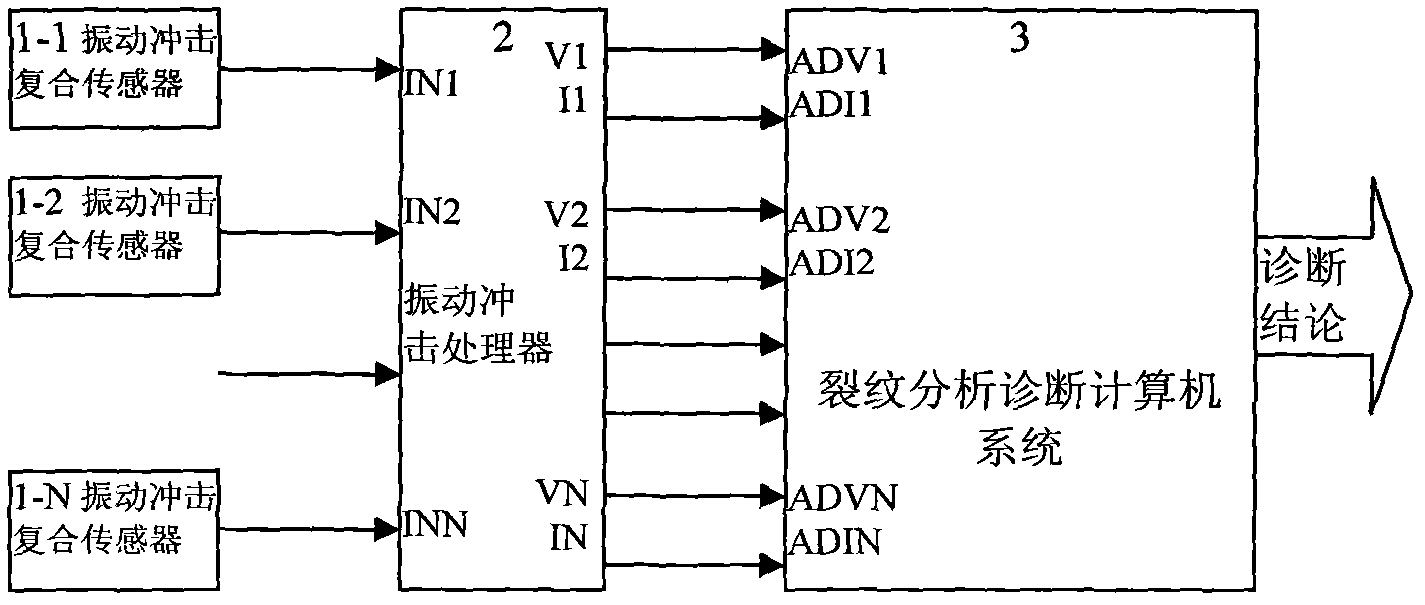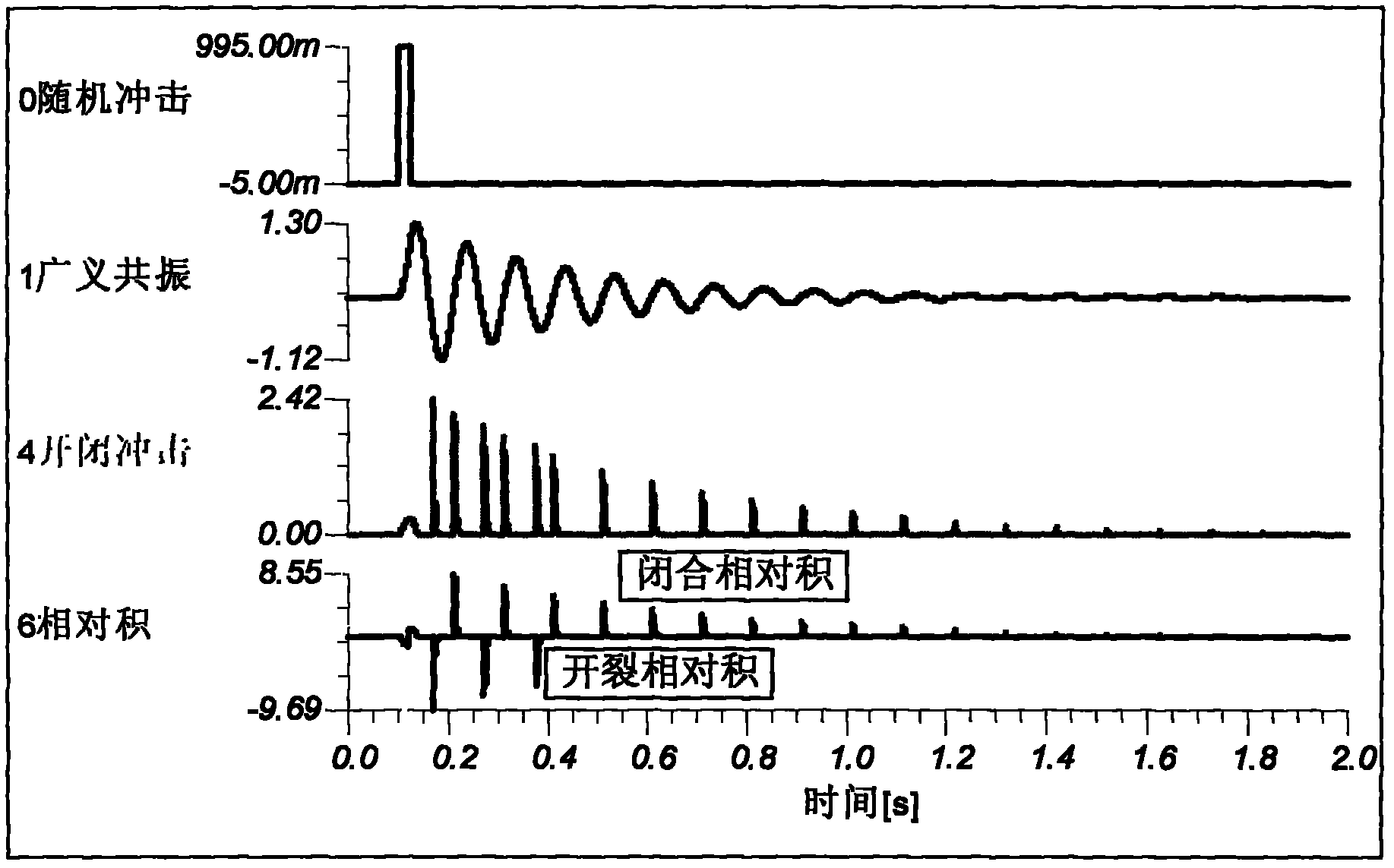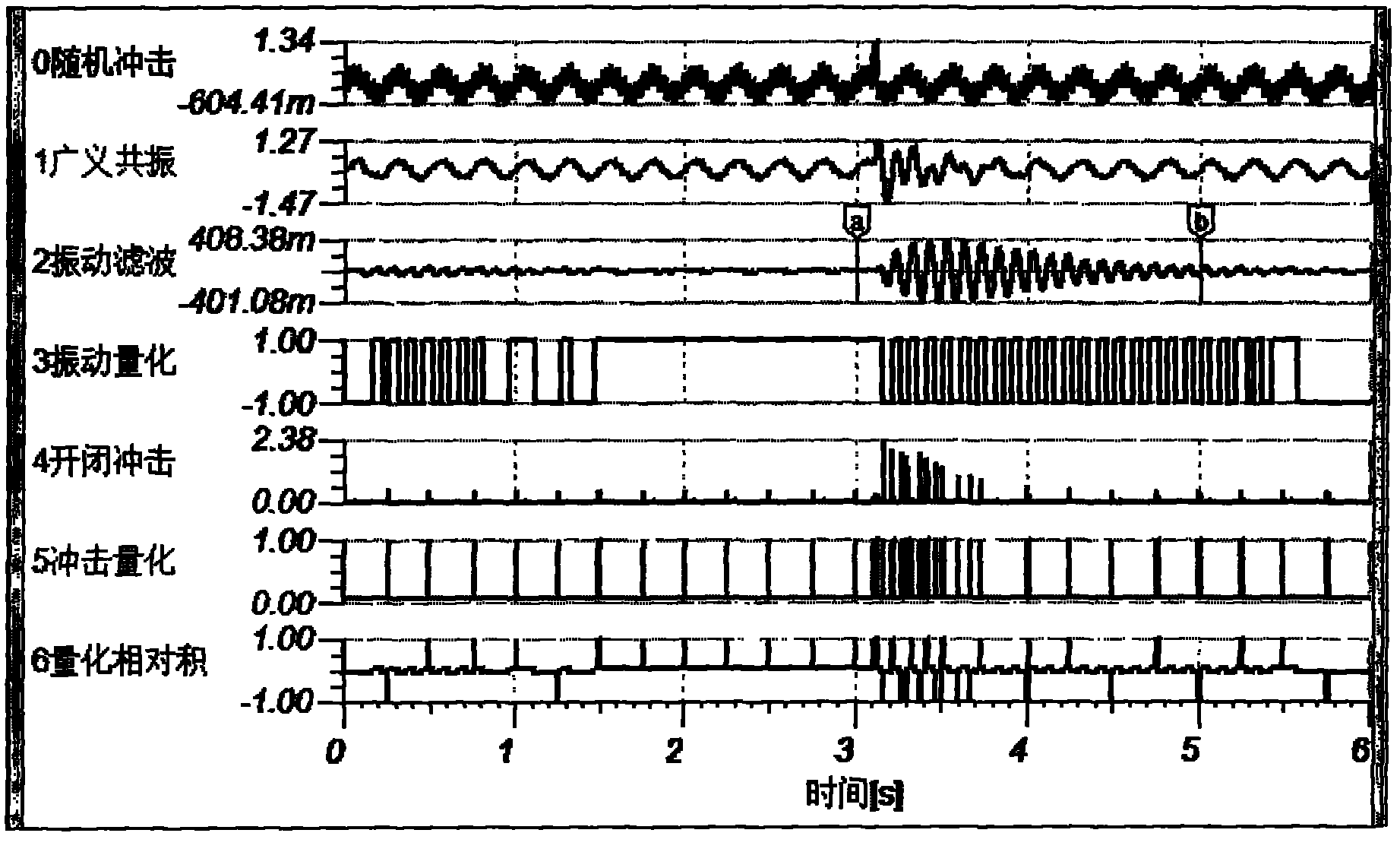[0004] The principle of magnetic flaw detection is: sprinkle
iron powder on the surface of the
machine made of steel, use the
magnetic poles (such as N and S poles) of strong electromagnets to
straddle the two sides of possible cracks, and use the cracks to
cut off the
magnetic field lines of the magnets. The
magnetic circuit formed by the iron and steel
machine material makes the magnetic force line diverge to the surface of the
machine, and attracts the
iron powder to the crack to form a natural law and phenomenon to supplement the
magnetic circuit. Through the
iron powder gathering place that can be seen by the
human eye, the implicit Cracks; this technology is not suitable for machines made of non-ferromagnetic materials, such as aluminum
alloy machines, or machines made of weak magnetic materials (such as various stainless steels). Unable to effectively, quickly and accurately identify hidden dangers
[0005] The principle of
eddy current flaw detection is: apply high-frequency current to the planar
inductance coil, the coil generates alternating magnetic
force lines, move the coil along the surface of the machine, the magnetic
force lines are coupled into the
metal material of the machine, and
eddy current is generated in the
metal material material, then the current of the coil increases. Large; if there is a crack in the shallow layer of the material where the coil moves, the
eddy current in the material decreases, and the current in the coil also decreases, and the crack is identified by the current decrease; the
disadvantage of this technology is that it cannot identify deeper cracks, and is also subject to Whether the surface of the machine is flat, smooth and whether the manual operation is appropriate
[0006] The principle of ultrasonic flaw detection is to use an ultrasonic sounding probe close to the surface of the machine, and radiate short-term ultrasonic
waves into the machine through a
coupling agent, or use an ultrasonic receiving probe to detect ultrasonic
waves at other positions of the machine, and identify them by finding that the
ultrasonic transmission ability becomes smaller There may be cracks in the machine between the transmitting and receiving probes; or through the receiving probe combined with the transmitting probe, the received echo of the transmitted wave arrives earlier than other parts when the transmission is stopped and the front is found Possible cracks; this method requires
smooth surface of the machine to facilitate the
coupling of transmitting and receiving probes, and is also troubled by small cracks and cracks at close distances that are not easy to find and identify
[0007] The principle of coloring inspection is: clean the surface of the machine that may have surface cracks, apply a dark penetrant, which has a strong ability to flow along the
metal surface (especially cracks), and then wipe off the machine. Apply white paint to the penetrating liquid on the surface. If there is a crack in a certain place that has infiltrated the penetrating liquid before, the penetrating liquid will flow out to the white paint layer in reverse and
stain it. It can be identified by the
staining position and distribution shape on the white paint Existence and distribution of cracks; this technology can only identify cracks that penetrate the surface, and can only be used to verify suspected cracks, which is not convenient for common and
frequent use[0008] The principle of
dynamic stress monitoring with strain gauges all over the place is to paste a large number of strain gauges on the surface of the machine where cracks are expected to occur. When the machine is moving, if the crack covered by a certain
strain gauge opens, the resistance material of the
strain gauge will It is stretched and elongated, and the possible cracks are identified by detecting the small increase in resistance compared to other strain gauges; the number of strain gauges required for this technology is huge, and the position of the sticking must be estimated very accurately , otherwise it is invalid; also because there will be stretching or compression in the elastic range without cracks on the surface of the machine during vibration or work, which will also cause the resistance increase of the
strain gauge, so its detection accuracy is limited
[0009] Therefore, many existing crack detection technologies have deficiencies in monitoring frequency, implementation difficulty, cost level, restrictions on the detected object (such as stopping use), and the number of sensors used. A new method that saves the number of sensors, is suitable for harsh operating environments, and can be accurately and frequently monitored at any time during online operation to make up for the above shortcomings
 Login to View More
Login to View More  Login to View More
Login to View More 


